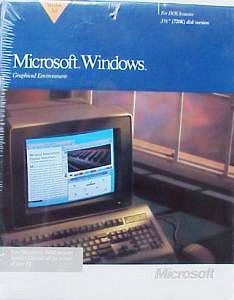Windows 95 wiped out last PC competition

Windows 95 marked the last time Microsoft faced any "serious competition" in the PC operating system market, an analysts recalls, as the software vendor gets ready to launch its much-anticipated Windows 7 tomorrow.
- 1985: Windows 1.0
- 1990: Windows 3.0
- 1992: Windows 3.1
- 1995: Windows 95
- 1998: Windows 98
- 2000: Windows 2000
- 2000: Windows Me
- 2001: Windows XP
- 2007: Windows Vista
- 2009: Windows 7
Martin Gilliland, vice president of go to market strategies at Frost & Sullivan, said Windows 3.0's focus on offering a user-friendly interface brought Microsoft founder Bill Gates' vision of a "PC on every desk" closer to reality. But, mass adoption was seen only from Windows 95, which ended up winning the PC OS battle against IBM's OS2, Gilliland said in an e-mail interview with ZDNet Asia.
"Windows 95 was the real boon for Microsoft. With it, we saw mass adoption of PCs in businesses and started to see more and more [of the platform] in the home," said the analyst. He noted, however, that its triumph over OS2 was mostly due to Microsoft's marketing and sales clout.
"The one big difference between Microsoft and Apple is that Microsoft allows Windows to be installed on any device with a license, [while] Mac OS can only be loaded and run on an Apple device," he said.
"One thing we can say with confidence is that Windows rules because of Microsoft's marketing and sales strength and its licensing model," Gilliland said.
Richard Francis, Microsoft's Asia-Pacific general manager for Windows client group, agreed that Windows 95 was the most successful release of the OS.
 Source: Microsoft |
In an e-mail interview, he said: "Windows 95 was a giant leap forward and spurred the development of the Windows ecosystem, which, today, with the release of Windows 7 is expected to benefit US$18.52 for every dollar spent on Windows 7."
Windows 95 was also the first version that brought the Internet closer to people, Francis said, noting that this might have laid the ground for another new chapter with the upcoming launch of Windows 7 "to make PCs simpler, faster and easier". He added that Windows 7's mantra in making PCs simpler was built upon a similar idea.
Tan Teik Guan, CTO and CEO of Singapore-based Data Security Systems Solutions (DSSS) Asia, recalled Windows 2000 fondly.
Tan said in an e-mail: "It was the most stable version for me. I did most of my coding on that platform." He added that the Windows 2000 architecture, which formed the foundation of Windows XP and now Windows 7, makes the prospect of migrating to Windows 7 appealing.
However, he said he will likely wait before deploying Windows 7 because he refrains from being an early adopter, preferring consistency in his desktop tools. "I'm still a DOS prompt and notepad user, and I'm very glad that they have stayed relatively the same throughout the [different Windows] versions," he added.
Making hardware work together
Recounting Intel's collaboration with Microsoft on each Windows release, Tim Bailey, Intel's director of marketing and consumer sales organization for Asia-Pacific, said the chipmaker's focus for each release had varied, but centered mostly around "performance, energy-efficiency, reliability, virtualization, security and multimedia".
Source: Microsoft |
For Windows 7, Intel's focus was on performance, power management and multimedia handling, Bailey explained in an e-mail.
Naming a few examples of collaboration with Microsoft for the upcoming release, he said multitasking was given a boost by a new feature called SMT parking, which focuses on better performance for hyper-threaded processors. Support in Windows 7 for multicore processors is also expected to aid hyper-threading applications, he noted.
On power management, Intel and Microsoft partnered to "optimize Intel drivers" to enable sleep and resume cycles to be more responsive, and also to enable better support for Intel's power-saving SpeedStep technology embedded in its chips, said Bailey.
This was made possible by closely sharing information, he said. "Intel provided Microsoft with instrumented systems so that we had the same context to analyze and tune power. This allowed us to compare builds, identify regressions and root cause problems, [and] resulted in modifications to Intel products and changes in Windows 7 to enable PC manufacturers to build more power-efficient PCs," he explained.
Microsoft's Francis said the company's efforts in user-testing Windows 7 saw 8 million people trialing the new OS version, Some 16,000 online interviews were also conducted to gather user feedback, he said.
The software giant first opened a test version of Windows 7 to the public last October, and released a beta version in January this year.
Some analysts have speculated Windows 7 will add new demand for hardware, to the tune of US$1 billion. Others, however, have been doubtful of a significant jolt to the PC market that the new release is expected to trigger.
Research firm Gartner last week also issued an advisory recommending key steps businesses should take before migrating to Windows 7.